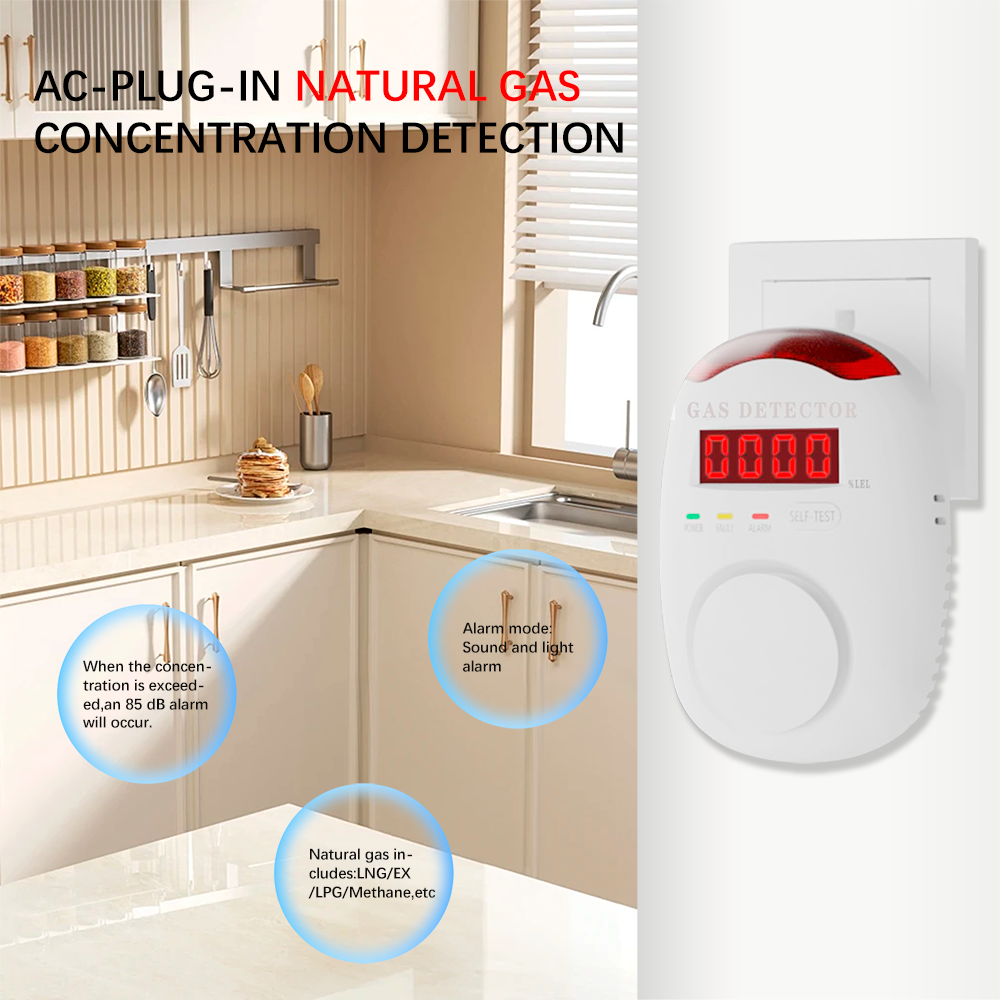How do gas detectors work?
Natural gas is a clean and efficient energy source, but leaks can pose serious risks, including explosions, fires, and carbon monoxide poisoning. A gas detector
is an essential safety device that sounds an alarm before gas concentrations reach dangerous levels. We'll explain how gas detectors work, their main functions.
How do gas detectors work?
Natural gas detectors use advanced sensor technology to detect gas leaks in the air. The most common detection methods include:
1. Catalytic (Pellistor) Sensors
Used to detect methane (CH₄) and other combustible gases. Works by measuring the heat generated when the gas reacts with a catalyst. Best suited for industrial environments
where high concentrations of gas may be present.
2. Infrared (IR) Sensors
Use infrared light to detect gas molecules. Highly accurate and resistant to contamination. Commonly found in home and commercial gas detectors.
3. Electrochemical Sensors
Detect carbon monoxide (CO) and other toxic gases. Works by measuring the change in current when the gas interacts with an electrode. Used in combination detectors (CO + natural gas).
4. Semiconductor Sensors
Detects gas by measuring changes in resistance. Affordable, but less accurate than infrared or catalytic sensors. Often used in affordable home detectors.

Key Features of a Reliable Natural Gas Detector
When choosing a gas detector, look for these basic features:
High sensitivity – detects even tiny leaks (CO leaks as low as 10 ppm, methane leaks as low as 5% LEL).
Fast response time – sounds an alarm within seconds of detecting gas.
Visual and audible alarms – loud 85+ dB alarm + flashing LED light.
Battery backup – ensures operation during power outages.
Smart connectivity – some models can send alerts to your smartphone via Wi-Fi or Bluetooth.
Where should a natural gas detector be installed?
For maximum safety, install detectors in: Kitchens (near gas stoves and boilers), Utility rooms (near furnaces, water heaters), Garages and basements (where gas pipes are laid), Industrial sites
(near pipes and tanks)

Installation tips:
Install 5-10 cm below the ceiling (gas rises).
Avoid installation near windows or vents (prone to false alarms).
Test monthly to ensure proper operation.
Gas Detector FAQs
Q: How often should I replace my gas detector?
A: Most gas detectors have a lifespan of 5-10 years (check manufacturer guidelines).
Q: Can gas detectors detect propane?
A: Some models can detect both methane and propane - check specifications.
Q: Do I need a professional to install it?
A: Most home detectors are plug-and-play, but industrial units may require expert installation.
Looking for the best gas detector? Check out the top models with real-time alerts and long-lasting sensors today! A gas detector is a small investment that can prevent disaster. Whether it’s
for home safety, compliance requirements, or industrial use, choosing the right detector ensures early warning and peace of mind.

